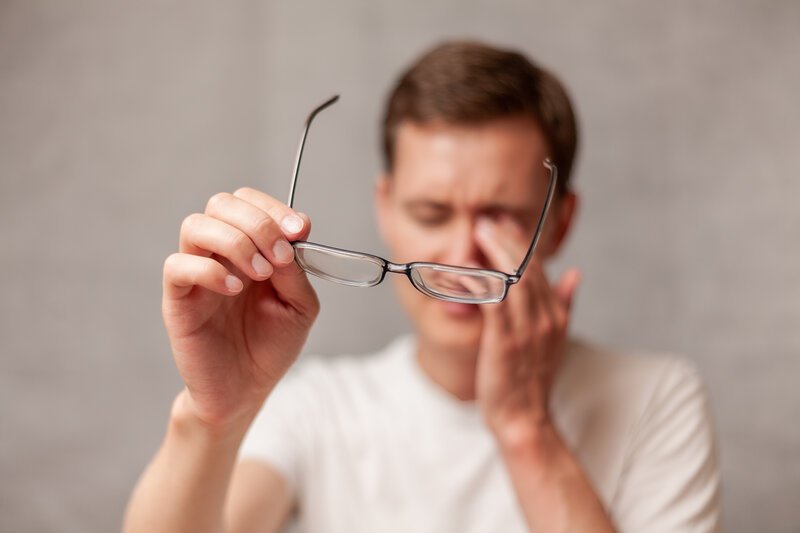Removal Of Foreign Object From Eye: DIY Or Eye Doctor?

From the eyelashes or food products to the odd piece of dirt or other debris, it’s inevitable that you or someone you love will wind up with a small foreign object in one or both eyes. In most cases, minor foreign object removal can often be done safely at home. That said, there are cases where you should immediately seek medical attention by contacting your eye specialist ASAP.
A foreign object is anything from the outside world that enters your eye. The conjunctiva (the durable, protective membrane that covers the inside of the eyelids and the whites of the eye) and the cornea (the eye’s outermost lens). While both of these are designed to tolerate a bit of irritation or mild injury as the result of foreign objects getting into their space, great care must be taken to protect against more serious damage or infection.
DO NOT Attempt Foreign Object Removal From Your Eye If…
Before we go into safe removal of small foreign objects in the eye, we want to be very clear. There are certain circumstances that warrant immediate medical attention from a physician or eye specialist. These include:
- If the object has penetrated or impaled the eyeball and/or eyelids
- Glass objects
- Metal shards
- Toxic chemicals
You Also Need Immediate Medical Attention If…
You should also seek immediate medical attention when:
- Initial attempts at removing the object are not successful
- You remove the object(s) but your vision is impaired afterward
- Pain, light sensitivity, redness, eye-watering, or swelling continue 24-hours after the object is removed
The Most Likely Culprits To Enter The Eye
The most likely culprits to enter the eye, and that is usually safe to remove on your own, include:
- Eyelashes
- Dried mucous
- Cosmetics
- Dust
- Sand
- Dirt
- Sawdust
- Leaf or wood debris (often the result of yard work or gardening)
While the protective membranes of the eye are pretty durable, they are also incredibly sensitive. They’ll let you know right away when a foreign object gets in your eye because it will feel/look:
- Irritated
- Teary
- Painful (or a feeling of pressure/discomfort)
- Sensitive to light
- Red and bloodshot
Your eyes will also begin to blink rapidly. The combination of rapid blinking and tearing is the eye’s natural attempt to remove the objects. The simple act of keeping the eye closed, blinking and letting it overflow with tears, and holding a tissue to the outside of the inner- or outside-eye corners to catch the tears and flushed objects may be enough.
If, however, the objects need more flushing than tears can create, or the objects are getting lodged underneath the eyelids or behind the eye, you or someone else can try to safely irrigate and remove the objects on your own.
Safe Steps For Small Foreign Object Removal From The Eye
If you feel the objects in question (sand, dirt, leaf or wood debris, paper, food particles, etc.) are small enough and safe enough to remove on your own, the following steps should bring safe and immediate relief.
NEVER touch the surface of your eyes with a tissue, cotton swab, or finger. You can unintentionally make things worse.
Wash your hands with soap and water
Wash your hands thoroughly with soap and warm water. The eye is quick to heal but the outer layer may be slightly scratched. Clean fingers and hands ensure that you don’t introduce more foreign matter to the eye and minimize the risk of infection.
DO NOT rub the eye(s)
There is no doubt that foreign material in the eye is extremely uncomfortable, and our first instinct is to rub the eye. Resist the urge!
Rubbing the eyes can make things far worse, and may necessitate an unnecessary visit to the eye doctor or urgent care waiting room if rubbing leads to further scratching, impalement, or damage to the eye or eyelids.
Remove your contact lenses
If you wear contacts, remove them immediately. If the debris gets trapped underneath, it can cause further irritation or harm.
Irrigate or flush the eye
If you have an eyecup and optical irrigation solution in your medicine cabinet or a first-aid kit, this is the time to use it. Read and follow the instructions. If you don’t have one, not to worry. You can flush your eyes on your own using one of a few methods:
- Under a faucet. Run a stream of lukewarm water from a sink faucet. If you are able to, hold your head sideways under the stream so the water runs generously over the surface of your eye. Hold the lower lids open a bit if you are able. If it’s hard to get your head under the stream or the thought of the faucet water is difficult, your cupped, washed hand to catch the water from the faucet and direct the water into your eye.
- With a small, clean drinking glass. If it appeals, you can fill a small, clean drinking glass with lukewarm water and hold the rim of the glass against the lower bone of the eye socket. Tip it with your head turned sideways and slowly pour the water over the eyeball. Repeat as necessary.
- In the shower. Similarly, you can hop into a lukewarm shower and let the shower water flow into your hand and into the eye with your head tilted sideways. Your eye will do the blinking for you.
Perform an inspection
If flushing the eye hasn’t worked, have someone else inspect your eye for you. If you are alone, you can do this yourself in a well-lit room with a mirror. However, your teary irritated eyes may make it difficult to see clearly.
If someone can help, sit down on a chair and have them inspect the surface of the eye for any foreign objects. If they can see it, try to use a medicine dropper with lukewarm water or the glass trick to flush the eye again. If the surface looks clear, have them lower your bottom lid while you look up, and then hold the upper lid away from the eye as you look down. This may reveal the offending object.
Flush again
Repeat the same flushing/irrigation techniques used in #4.
Contact A Local Eye Specialist
If you still don’t find relief, contact a local eye specialist. Even after hours you will be directed to an emergency line or call service. We’ll listen to your situation and provide further instructions. In most cases, if routine flushing and inspection aren’t working, you’ll need professional assistance to safely remove the small foreign object from your eye. We’ll also provide drops to relieve pain and prevent infection if necessary.
Are you in the midst of an uncomfortable eye situation as the result of pesky foreign objects in the eye? Contact Eye to Eye Family Vision Care to receive immediate assistance.

